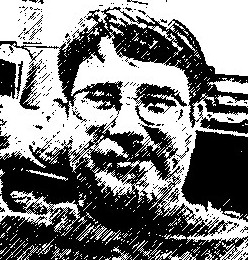I bought a couple of the brand-new Atlas Classic Silver Series SD9 locos, undecorated, in the hopes that I could put my Life Like Burlington SD7/9 shells on them. I got the silver series because I really didn't want sound, but this newest release comes with speakers already installed just in case you change your mind.
The good news is I was able to mill the inside of the Life Like shells to fit the chassis. The bad news is the chassis are back in their boxes ready to go back to Atlas.
So what was wrong with them, you might ask? Did they run poorly? No, not at all, they were smooth and quiet and the performance was superb. I was a bit surprised to see the trucks are wired rather than having the normal brass contact strips, but it seems to work well.
The problem is in the decoder boards.
For some reason Atlas has decided that the new SD7/9 should use the E24 connector. This is a brand new proprietary connector from ESU, meaning that only ESU is using it, and as far as I can determine it is only being used on one, and only one, of their decoders, the LokSound 58925.
I have no particular problems with ESU LokSound decoders, other than having to have special equipment to program them with their sound "projects" because they do not come pre-loaded (most dealers can do this for you), but I specifically bought the silver series because I didn't want sound. Unfortunately, with this locomotive, your choices are either DCC with sound using this particular ESU decoder or DC.
Swapping the entire interconnection board isn't an option either, partially because of the aforementioned hard-wired trucks and partially because the board is held to the chassis with screws. This means you either have to remove the light board altogether and replace it with a mash-up of a wired decoder and lights, or you go with the LokSound decoder.
Either way there is no benefits from using the new chassis when there are still plenty of the older ones out there that will serve the purpose. I was able to mill the LifeLike shells enough to fit, but not well, on older Atlas/Kato SD7's, but it is my understanding that the China made chassis are a bit narrower, which is why I wanted to go that route.
I'm sure that someone out there is buying the Gold chassis to fit older shells, so perhaps I can find some China made non-sound DCC ready chassis to use instead. But I digress.
To say I am disappointed with the new Atlas SD7/9 is a gross understatement. I don't know who the genius was at Atlas that thought it was a good idea to limit the decoder selection like this, but that decision puts them on par with the Bachmann GP7s and their crappy crippled Lenz decoders at twice the price.
If this is their new design paradigm, I certainly won't be buying any more new locomotives from Atlas.
